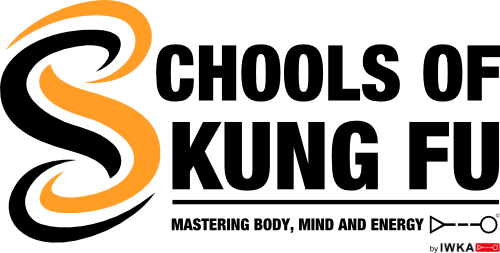Below is a list of SOME of Wing Chun’s features that were present in the Wing Chun System around the time of the Tai Ping uprising up till the point of its creation and are also a part of the IWKA System’s curriculum.
Song (getting rid of all unnecessary tension), the way of loosening and opening up the body and liberating the force flow paths.
Absorbing and issuing through the whole body and not only through specific parts of the body like for example only the arms or elbows while using hand techniques like Bong Sau, Tan Sau, Fook Sau, etc. The whole body is used according to the fusion of the Emei 12 Zhuang engine (snake engine) and Fujan White Crane engine (7 Bows, etc.).
Using the complete three shapes: the triangle, circle and the straight line, instead of focusing too much on the triangle and straight line.
Knowledge of detachment and separation of the body, mind and energy (detachment needed for issuing the diverse types of Jin and momentum handling).
Understanding the concepts of Ham Hong (empty chest), Lok Bok (dropping shoulder) and Chum Jarn (sinking elbows) and the consequences of not adhering to these concepts.
Avoiding rigid fixing of the shoulder blades or keeping the torso too tensed. This enables one to sink the opponents force into the ground and rebound it back up (action and reaction force).
Giving way to force with the whole body instead with just hand techniques.
The correct control of lower abs whole body breathing.
The knowledge of Chi (the biomechanical/bioelectric energy of the body and its flow throughout the meridians).
Expert handling in Fa Jin (force flow handling) instead of brute force pushing.
Using mainly energy transfer, tendon and joint power instead of brute muscular power.
The training of bridging and the use of the eyes instead of only contact reflex training.
Correct understanding of the Yee Gee Kim Yeung Ma stance based exactly on the writings of its ancestor arts, and specifications of the writer of the 1848 Kuen Kuit.
Understanding the real meaning of terms like sticking and following instead of thinking that following is just running after an opponent with chain punching and sticking just keeping in contact with the opponent.
Real ability to cut the roots of the opponent by internal sinking.
The use of flow and spontaneity.
Understanding the details of the forms through the Kuen Kuit, by making them alive and actually useful to train and develop real Kung.
Knowledge of Kiu Sao Wing Chun’s training method in handling energy whilst going from no contact to contact.
The Chi Kung part being integrated in the set to build up internal power and health.
Special Wing Chun San Chong (Zhan Zhuang in Mandarin) exercises to build internal power.
Complete understanding of heaven, human, earth.
Understanding of sinking.
Understanding of opening and closing.
Understanding of Fou, Cham, Tan and To (meaning Float, Sink, Absorb and Spit).
Knowledge of the Dan Tian, meridians and bubbling wells.
Understanding of YIN YANG (Yam Yeung) in many of the techniques.
Understanding of Cotton Body.
Understanding of the Three Rings.
Correct usage of the Kwa.
Knowledge of the snake technology from EMEI (the snake slide worm move and under the sleeve Jin, etc.) for handling the joints and energy transfer.
Knowledge of the Fujian White Crane Technology for the center line theory, the external shapes and 7 Bows.
Two types of force flow.
Four types of Jin release.
Five ways to execute the Fa Jin by means of detachment.



 Lietuviškai
Lietuviškai